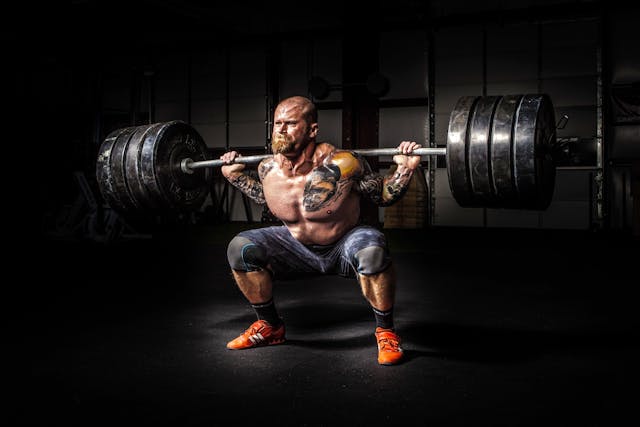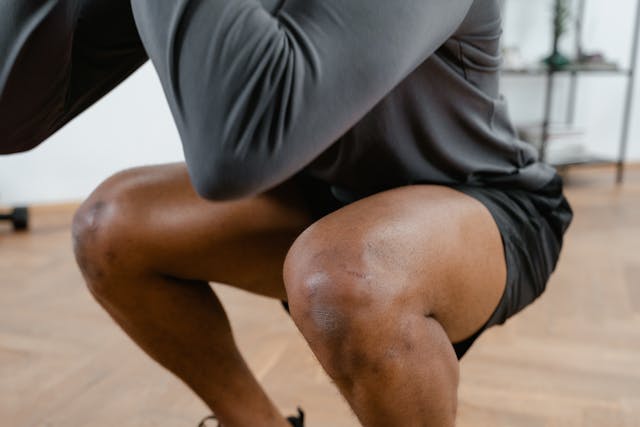Ever wondered what will happen if you do a 100 squats every day? Let’s dive together the impact of doing 100 squats a day onto your body and overall health.
Table of Content:
The Impact of 100 Squats a Day
Squats are often called the “king of exercises”. This is due to their simplicity, versatility, and effectiveness in building lower body strength. But what if you committed to doing 100 squats every single day? Many fitness enthusiasts have tried this kind of daily challenge, and while results can vary, there are some predictable physical and mental effects that people commonly experience. From improving muscle tone to enhancing endurance, let’s take a closer look at what you can expect from taking on a daily 100-squat regimen.

1. Improved Lower Body Strength and Muscle Tone
Squats are a compound exercise, meaning they engage multiple muscles and joints at once, which is ideal for building strength and endurance. When you perform 100 squats a day, you’re primarily working muscles in your legs and glutes, including:
- Quadriceps (front of the thighs)
- Hamstrings (back of the thighs)
- Glutes (buttocks)
- Calves (lower leg muscles)
While doing 100 bodyweight squats may not create significant muscle mass as quickly as weightlifting might, it still can make a noticeable difference in muscle tone. Many people notice that their legs and glutes feel firmer, tighter, and more toned after a few weeks of daily squats.
Since squats involve a large range of motion, they help improve flexibility in your hips, knees, and ankles, which can contribute to more efficient and injury-resistant movement patterns in everyday activities. Additionally, stronger legs make everyday tasks, like carrying groceries, climbing stairs, or standing for extended periods, easier and less taxing on your body.
2. Calorie Burn and Potential for Fat Loss
Squats are a high-energy movement, which means they naturally burn calories. This effect is compounded when you do 100 squats consecutively, making this exercise a great tool for promoting fat loss if you’re also managing your diet. Performing squats in such high repetitions activates multiple large muscle groups, which helps burn a good number of calories compared to other isolated exercises.
However, it’s worth noting that spot reduction (losing fat from just one part of the body) is a myth. While you may see a firmer appearance in your lower body, visible fat loss will depend on your diet and overall body fat percentage. Combining daily squats with a balanced diet in a slight calorie deficit can contribute to overall fat loss, leading to a leaner physique.
3. Enhanced Muscular Endurance and Stamina
One of the most noticeable outcomes of doing 100 squats a day is improved muscular endurance, particularly in your legs and glutes. Unlike traditional strength training, which focuses on lower repetitions with heavier weights, a high-repetition approach like this targets endurance.
With daily repetition, your muscles adapt to handle higher loads and lactic acid build-up, helping delay fatigue. After just a couple of weeks, many people report being able to complete all 100 squats with greater ease, which translates into more stamina for other physical activities.
You’ll also develop mental endurance and discipline as you push through the routine each day. Completing 100 squats every day is no small task, especially if you’re a beginner. The mental resilience you build can carry over to other areas of your life, making it easier to take on new challenges and persevere in the face of difficulty.
4. Strengthened Core and Stability
Though squats are mainly thought of as a lower body exercise, they also engage the core. When performing squats correctly, your core muscles activate to stabilize your torso and maintain a neutral spine. Over time, this can lead to stronger abs, obliques, and lower back muscles.
A strong core is essential for good posture, balance, and overall functional strength. By strengthening your core, you may find that other daily activities become easier, whether it’s lifting items overhead or improving your balance. Additionally, a strong core can alleviate back pain and support spinal health, especially if you spend a lot of time sitting during the day.
5. Potential Joint and Ligament Strengthening
Squats, when done with proper form, can benefit the joints and connective tissue surrounding the knees, hips, and ankles. Repeatedly performing squats can help strengthen the ligaments and tendons in these areas, which enhances stability and reduces the risk of injury.
However, if you’re new to squats or struggle with flexibility or joint mobility, performing 100 squats daily could place excess strain on your joints, especially in the knees and lower back. To avoid any issues, make sure you’re using proper form, such as keeping your knees aligned over your toes, lowering your hips back as if you’re sitting in a chair, and keeping your chest up to prevent excess forward leaning.
If you notice any discomfort, it may be wise to scale back to a lower number of repetitions or add rest days to allow your body adequate recovery time.

Risks of Overuse and Repetitive Strain
Although 100 squats a day can deliver results, doing the same repetitive motion daily can lead to overuse injuries or repetitive strain. This is especially true if you’re not accustomed to high-repetition exercises. Some of the most common overuse issues include:
- Knee Pain: If your squat form is not perfect, or if your knees tend to cave inward, you could develop knee strain or pain over time.
- Lower Back Strain: Improper squat form, such as allowing your back to round, can put extra pressure on your lower back.
- Muscle Imbalance: Squats alone work certain muscles while leaving others under-trained, which can result in an imbalance.
If you feel soreness that goes beyond typical muscle fatigue, it might be beneficial to take a break or incorporate rest days to prevent injuries from becoming chronic.
Tips for Safe and Effective Squat Training
To make the most of your daily squat challenge, it’s essential to follow a few key guidelines:
- Focus on Form: Prioritize good form, including keeping your knees aligned over your toes, engaging your core, and keeping your chest up.
- Vary Your Routine: Try incorporating different types of squats, such as sumo squats, jump squats, or holding weights, to work slightly different muscle groups.
- Include Rest Days: If you start experiencing soreness or joint pain, consider taking a rest day or two each week.
- Stretch and Warm-Up: To avoid injury, incorporate a quick warm-up and post-workout stretch to keep muscles limber and improve flexibility.
In a Nutshell
Doing 100 squats a day can offer benefits like improved leg strength, enhanced endurance, and a stronger core. It can also be a valuable addition to a weight-loss or muscle-toning routine. However, it’s essential to be mindful of form and to listen to your body to avoid overuse injuries.
For long-term gains, consider complementing your daily squats with a variety of other exercises for a balanced workout.
Check our article about the impact of doing 100 push ups a day.


